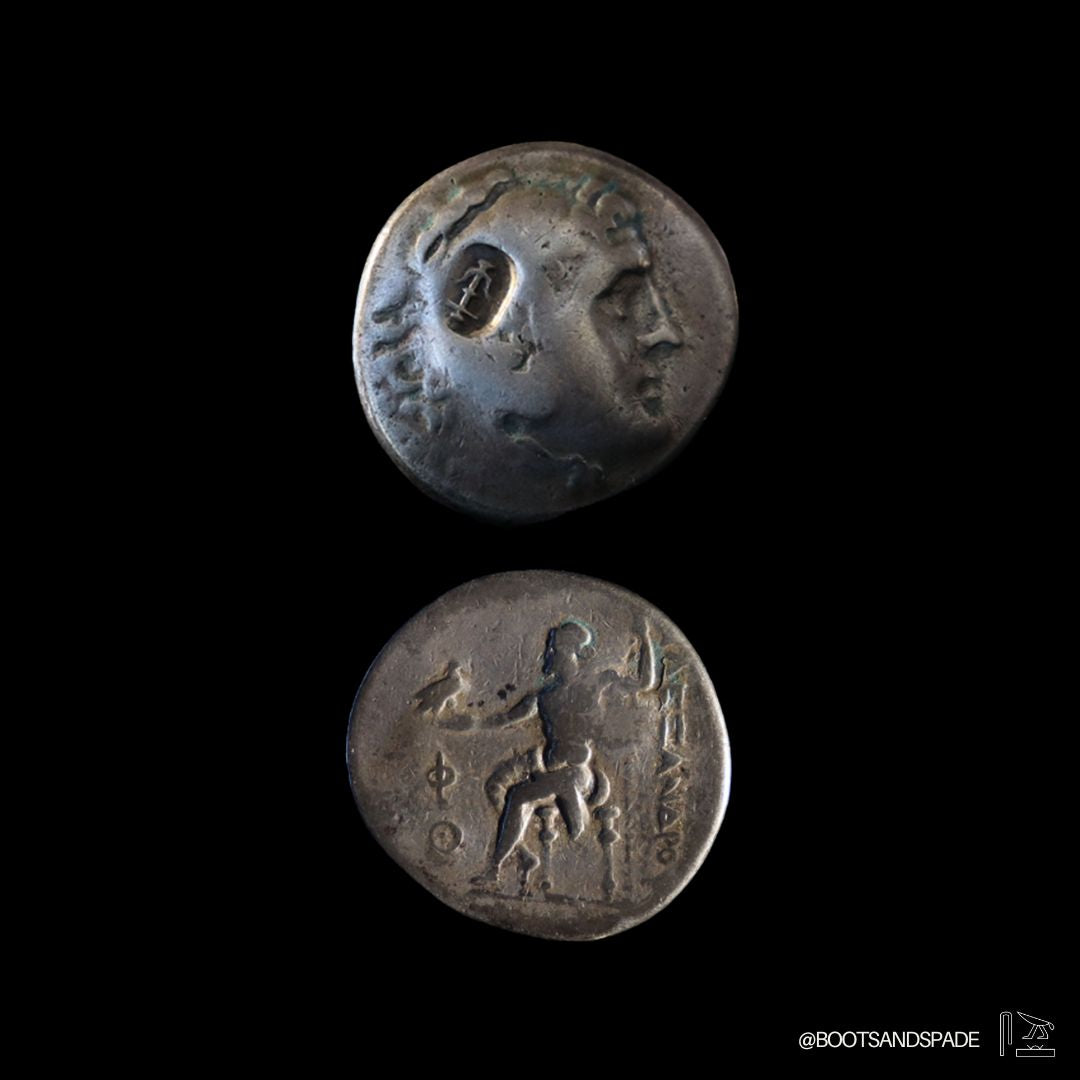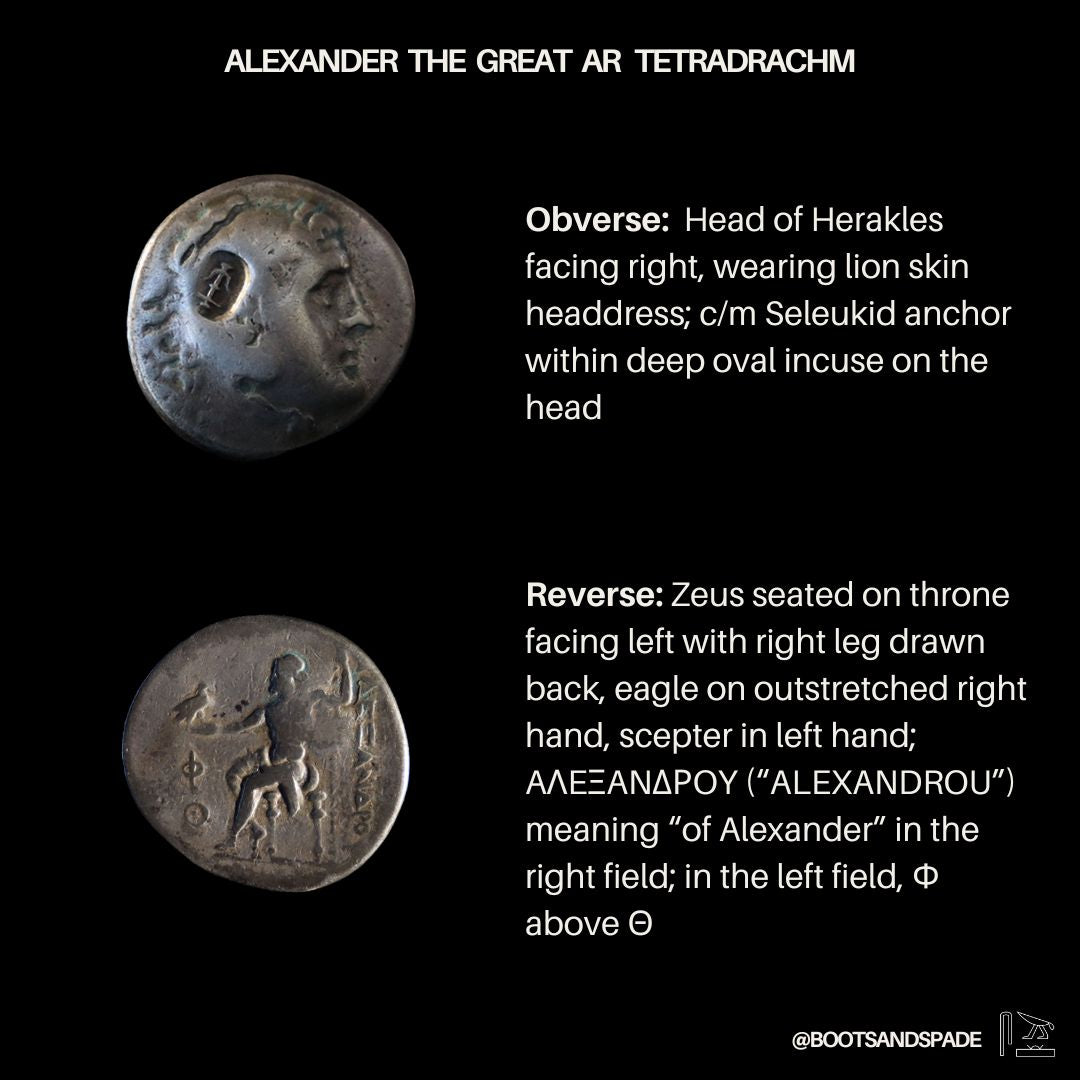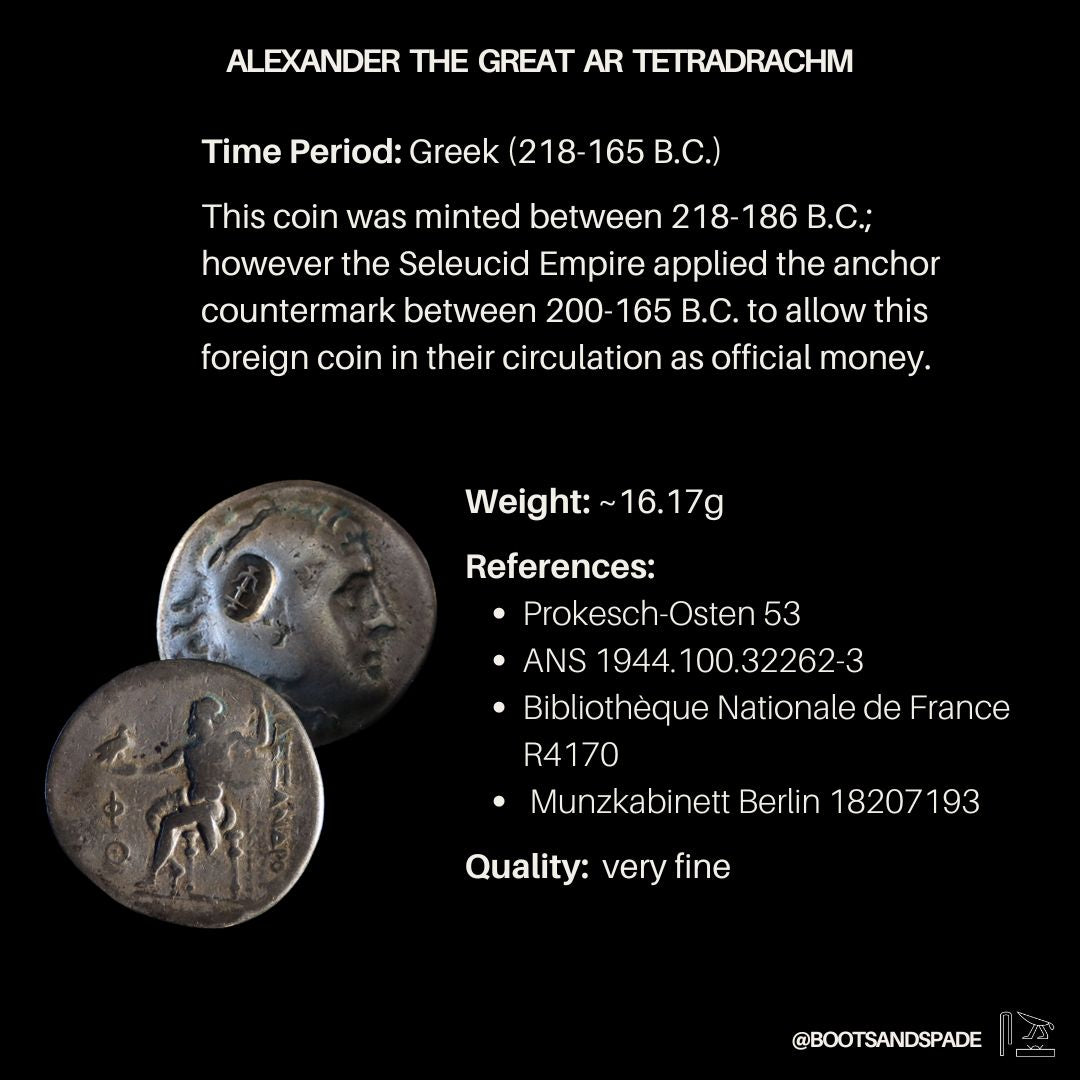Boots & Spade
Alexander the Great Silver Tetradrachm with Rare Seleucid Countermark
Alexander the Great Silver Tetradrachm with Rare Seleucid Countermark
Couldn't load pickup availability
Alexander III (Alexander the Great), AR Tetradrachm. Paselis, Lycia mint. 218-186 B.C. (coin struck) and 200-165 B.C. (countermark). Posthumous issue.
Obverse: Head of Herakles right, wearing lion skin headress, with Seleucid anchor countermark on the head.
Reverse: Zeus seated on throne facing left with right leg drawn back, eagle on outstretched right hand, scepter in left hand. AΛEΞANΔΡOY (“ALEXANDROU”) meaning “of Alexander” in the right field; in the left field, Φ above Θ.
References: Price 2846; Prokesch-Osten 53; American Numismatic Society 1944.100.32263; 1944.100.32262; Bibliothèque Nationale de France R4170; Munzkabinett Berlin 18207193
In numismatics, a countermark refers to a secondary mark that is stamped or punched onto a coin after it has already been minted. Countermarks served various purposes, including validating a coin's authenticity, revaluation/devaluation, and acting as a form of currency control. Here, the Seleucid anchor countermark specifically pertains to authorized coins used during the Seleucid Empire. The Seleucid practice of countermarking foreign silver coins, particularly tetradrachms, played a crucial role in validating and regulating their circulation as authorized currency.
Provenance
Provenance
Not applicable for numismatics
Dimensions
Dimensions
Share






